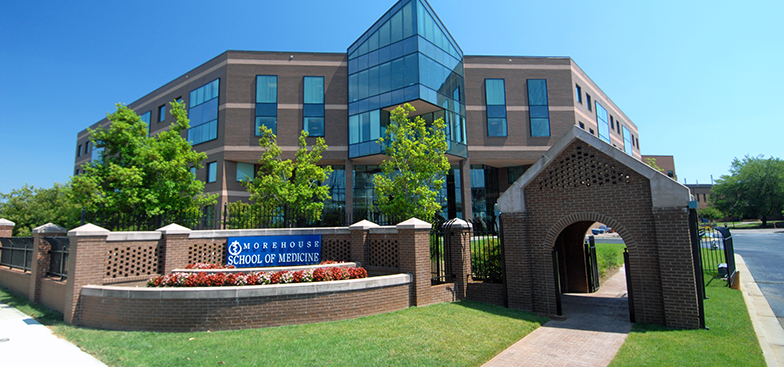By Keisha Callins, MD, MPH, and Fatima Humayun, MS-3
In any circumstance, a cancer diagnosis bestows an immediacy for survival and an urgency to overcome the odds. This may include a variety of components such additional imaging and laboratory tests, pre-operative clearance, consultation with other specialists, neoadjuvant therapy, or surgery. Even in a well-organized medical community, this can be a challenging endeavor with the deafening backdrop of a ticking clock. As you can probably imagine, in rural and underserved populations, this process can be further impacted by the “obvious” challenges such as access to care and the social determinants of health, as well as the “not so obvious” challenges such as the patient’s attitude towards their cancer diagnosis, and the patient’s perception and prior experiences (direct or indirect) with the medical community.
Regardless of the diagnosis or the presumed prognosis of any cancer, all efforts to minimize potential delays in access to appropriate care and expand capacity to address emotional and behavioral concerns, are essential elements of physician advocacy to accelerate care coordination in a sincere effort to achieve the most desirable outcomes.
Throughout the entirety of my career as an obstetrician/gynecologist (ob/gyn), I have had the privilege of working in federally qualified health centers (FQHC) in rural and underserved communities in Southwest and Central Georgia. These transformative experiences have afforded me the expertise to suggest that only approximately 30% of my time is necessary for the actual diagnosis and decision-making, while the remaining 70% is dedicated to the problem-solving required to coordinate the delivery of care and implementation of the care plan. I frequently tell my students that, “the medicine is the easy part, I promise.”
In one experience, on an initial visit with a patient, I discovered a concerning case of vulvar cancer. With the patient’s permission, I stepped out of the room to do two things – request the presence of her family member in the room to continue the conversation about next steps and to call my gynecologic-oncology colleague. My colleague recommended that the patient come in that same day for admission. I was ecstatic. I proceeded to explain the urgency of further evaluation and treatment and was promptly met with resistance. To start, the patient had not been to the doctor in several decades, she feared the prognosis and expressed that if she needed surgery, she wanted to wait until after her birthday which was 3 weeks away. I am sad to say, I did not win that battle. However, while anxiously awaiting her appointment on the Monday following her birthday, I was able to:
- order labs and tumor markers
- schedule and monitor completion of her mammogram and PET Scan
- connect her to our social worker to provide gas cards for transportation to the imaging studies and appointments
- convince her only living family member to agree to drive 30 minutes to the “city” for her appointments
- help her establish care with a primary care provider and start pre-operative clearance
- offer medical management of her discomfort
- offer support for smoking cessation
- present her with an edible birthday treat on behalf of the office staff
When she did finally make her first appointment with the oncologist, all the necessary steps were completed after much discussion and dedication. In my experiences in the rural practice setting, this level of clinician involvement becomes the catalyst for compassionate innovation and insightful collaboration.
The most valuable lessons learned regarding management of gynecologic cancers during my rural experiences have propelled me to build a patient-centered, community-responsive healthcare safety net. This mission is deeply rooted in my adherence to the philosophy, “I will either find a way or make one” and is dependent on two key elements, relationships and resources. Relationships can be compared to a “bridges” construct, and, in healthcare, you spend just as much time building bridges, as you do repairing bridges with patients, their support system, and providers. A solid working relationship with my gynecologic oncology colleague and their staff is paramount, especially since we only have one currently servicing our region of the state. The ability to have an immediate response to your consultation request is a gift that I do not take for granted. This allows us to work together to expedite appointments when necessary and coordinate the preliminary evaluation to help optimize time from diagnosis to decision plan for care. Resources can be compared to the “supply and demand” concept, you must identify the demand to supply it, in other words, you must identify the patient’s unique needs so that you can then address them. The endeavor to establish trust with the patient at a vulnerable moment must be both delicate and deliberate and will serve to mitigate their anxiety, while guiding your ability to connect them with appropriate resources. With most of my patient population being uninsured, I have learned that being able to confirm a suspected cancer diagnosis with pathology results allows me to coordinate directly with the staff at the local health department to expedite the application process for state-sponsored medical coverage, which helps to alleviate financial stress.
It is imperative for the ob/gyn serving in rural and underserved communities to use the #ASAP (Accelerated Support and Advocacy Plan) mindset. This transforms patient challenges in care coordination for gynecologic cancer cases into learning opportunities that will have the immediate benefit for that patient and become learning pathways with potential benefit for future patients. In all honesty, while outcomes are often dependent on multiple factors outside of your control such as limited or delayed access to preventive care and stage of cancer at time of diagnosis, you can control your ability to make a commitment to advocating for your patient and accelerating coordination of care. This #ASAP mindset can then be a game-changer for your patients’ healthcare journeys and potentially be a meaningful step to building trust in some of our most marginalized populations.

